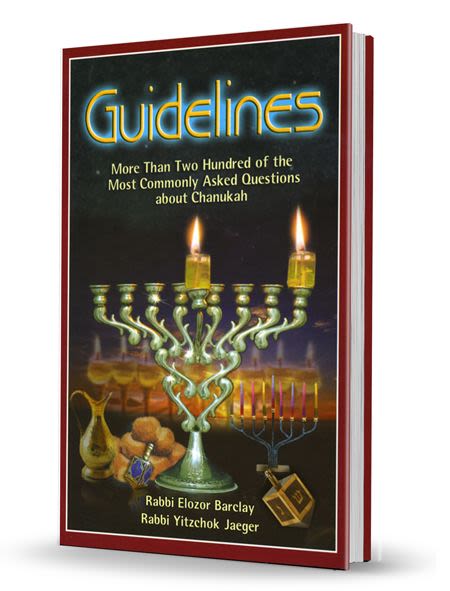
The Wheel of Transformation
It is like a dreidel, a spinning top, where everything goes in cycles. Man becomes angel, and angel becomes man. Head becomes foot, and foot...

We often have discussed the prohibition against having anything at all to do with philosophical works. This includes even philosophical works of the great rabbis. Even these are not permitted, as stated in many places in our sacred literature [See Tzaddik: A Portrait of Rabbi Nachman, sec. 407-360, esp. ff. 1, 3, 13, which list a number of Rishonim opposed to such works. The teaching above was said during Chanukah 5570 (1809); see also Parpara’os LeChochmah II, 7:7.1]. Such things are not the “portion of Yaakov (Jacob)”[Yermiyahu 10:16, 51:19], and we have nothing at all to do with them. We believe that Hashem created and sustains the world and will renew it some day. For this we do not need philosophy. Most books on religious philosophy ask questions that appear very difficult while providing very weak answers. If one probes deeper, he can refute the answer and render it completely useless. One with true wisdom will realize that the questions themselves are nothing. They are mere “vanity and striving after wind” [Kohelet 1:14]. Therefore, it is best to avoid such books completely.
It is very surprising that many people are drawn to philosophy, yet they have no interest in such fascinating Kabbalistic works as the Zohar and the writings of the Ari z”l. People seek wisdom, yet ignore these sacred works filled with ideas that are “sweeter than honey and enlighten the eyes”[Tehillim 119:9, 11]. The truth is that such people cannot endure such holy things because of their inborn evil nature. [Bereishit Rabbah 28]. They still have free choice to overcome this nature, but the fact that it is inborn makes it bitterly difficult. Fortunate is the person born in holiness.
A favorite subject of the philosophers is the order of Creation. They may ask why a star is worthy of being a star, or a constellation a constellation, while other things are consigned to a lower realm; or why lower animals are not given human faculties; or why the head is a head, and not a foot [The vanity of such questions also is discussed in Emunot V’Dei’ot 6:4]. Questions like these are discussed at length in such books. But it is all “vanity and striving after wind.” For Hashem is just and righteous [Devarim 32:4], and it is impossible to question His reasons.
The world is a rotating wheel.
It is like a dreidel, a spinning top, where everything goes in cycles. Man becomes angel, and angel becomes man. Head becomes foot, and foot becomes head. Everything goes in cycles, revolving and alternating. All things interchange, one from another and one to another, elevating the low and lowering the high [Shemot Rabbah 31:14. Also see Shabbat 151b, Succah 5:6, Kesubot 10:6].
All things have one root.
There are transcendental beings such as angels that have no connection with the material. There is the celestial world, whose essence is very subtle. Finally, there is the world below, which is completely physical.
All three come from different realms, but all have the same root.
All Creation is like a rotating wheel, revolving and oscillating. At one time something can be on top like a head, with another on bottom like a foot. Then the situation is reversed. Head becomes foot, and foot becomes head. Man becomes angel, and angel becomes man.
Our sages teach us that angels were cast down from heaven. They entered physical bodies and were subject to all worldly lusts [Targum Yonatan on Bereishit 6:4, Yalkut 1:44]. Other angels were sent on missions to our world and had to clothe themselves in physical bodies [Targum Yonatan on Bereishit 18:2]. We also find cases where human beings literally became angels [Targum Yonatan on Bereishit 5:24, Bamidbar 25:12. Cf. Zohar Chadash 20b, 21a].
For the world is like a rotating wheel. It spins like a dreidel, with all things emanating from one root. (The feet of some are also higher than the heads of others; for in the transcendental worlds, the lowest of an upper world is higher than the highest level of a lower one. However, in truth, everything revolves in cycles.)
This is why we play with a dreidel on Chanukah [Chanukah celebrates the defeat of the Greeks, the embodiment of Greek philosophy].
Chanukah is an aspect of the Holy Temple. The primary concept of the Temple is the revolving wheel. The Temple was in the category of “the superior below and the inferior above”[Pesachim 50b; Baba Basra 10b]. Hashem lowered His Presence into the Temple; this is “the superior below.” The Temple’s pattern was engraved on high [Tanchuma, Pekudei, 1; Zohar I, 80b]; this is “the inferior above.”
The Temple is therefore like a dreidel, a rotating wheel, where everything revolves and is reversed.
The Temple refutes philosophical logic.
Hashem is above every philosophical concept. It is beyond all logic that He should constrict Himself into the vessels of the Temple. “Behold, the heaven and the heaven of heavens cannot contain You – how much less this Temple!” [I Kings 8:27]. Nevertheless, Hashem brought His Presence into the Temple and thus destroyed all philosophical logic.
Philosophy cannot explain how human beings can have any influence on high. It cannot say how a mere animal can be sacrificed and ascend as a “sweet savor” [Bereishit 8:21; Shemot 29:19 etc.], giving pleasure to Hashem. They explain that this pleasure is the fulfillment of His will, but how can we even apply the concept of desire to Hashem?
Yet Hashem placed His Presence in the Temple, and accepted the animal as a sweet savor.
He made the fact contradict philosophical logic.
Such logic is crushed by the dreidel, the rotating wheel that brings the “superior below and the inferior above.
Between potential and existence stands the power of Hyle [Ramban on Bereishit 1:2; Eitz Chaim, Sha’ar Drushei ABYA]. Before each thing exists in reality, it exists in potential. Coming from potential to actuality, it must first pass through the intermediate step of the Hyle. All reality thus emerges from the Hyle.
The Hyle is therefore the source of all Creation.
The three categories of Creation – transcendental, celestial, physical – all come from this one root. As they interchange, they all revolve around this root.
The letters on the dreidel are Heh, Nun, Gimel, Shin.
Heh is Hiyuli, the Hyle.
Nun is Nivdal, the transcendental.
Gimel is Galgal, the celestial.
Shin is Shafal, the physical.
The dreidel thus includes all Creation. It goes in cycles, alternating and revolving, one thing becoming another.
Chanukah means “dedication.” This is the dedication of the Holy Temple, “the superior below and the inferior above.” This revolving wheel is the dreidel.
Redemption is also an alternating cycle. The superior [i.e., the mighty] are below, and the inferior [i.e., the oppressed] above, as in the Temple.
When the Jews crossed the Red Sea after the redemption from Egypt, they sang (Shemot 15:17): “You brought them and planted them on the mount of Your inheritance, the Temple which Your hands established.” Redemption was for the sake of the Temple, the revolving wheel. For when the superior are below and the inferior above, it shows that all have one root.
This is the meaning of the letters on the dreidel: Gimel, Shin, Nun, Heh.
They are the first letters of the verse (Tehillim 74:2): “You redeemed the tribe of Your inheritance, Mount Zion…”
Gimel is Go’altah — You redeemed
Shin is Shevet — the tribe
Nun is Nachalasecha — of Your inheritance
Heh is Har Tzion — Mount Zion.
This is the category of “You brought them, You planted them on the Mount of Your inheritance.” It is the aspect of the Holy Temple, symbolizing the revolving wheel, which is the main concept of redemption.
This is discussed further in the lesson delivered on the same Chanukah, on the verses (Bereishit 41:1), “And it came to pass at the end…” and (Yeshayahu 49:10), “With compassion He will lead them” [Likutey Moharan II, 7. This lesson was also delivered on Shabbat Chanukah, 5570 (1809)]. This lesson speaks of the superior below and the inferior above, as well as the fact that Chanukah is the dedication of the Temple. The “surrounding powers” discussed in this lesson are an aspect of the dreidel, the revolving wheel, since these surrounding powers encompass and rotate. Wisdom (chochmah) here is the category of the Hyle. Study the lesson carefully, and you will understand.
After all this we can return to our original discussion. We have no need of philosophy, which is anyway strongly forbidden. We must have faith in G-d, that He created, sustains, and eventually will renew all worlds.
(Used with permission from the Breslov Center adapted from Rebbe Nachman’s Wisdom, translated by Rabbi Aryeh Kaplan, published by Breslov Research Institute)












11/04/2011
correction — this is written by Rebbe Nachman, not Rav Sears Just wanted to clarify, for someone new to this website. It says at the top that the author is Rav Dovid Sears, but the author of the text is Rebbe Nachman. Rav Sears may have edited it or written the things in the parentheses, but nearly all the text is from Rebbe Nachman's book Rebbe Nachman's Wisdom. Just thought I would clarify in case anyone new to this site or to Breslev was confused!
11/04/2011
Just wanted to clarify, for someone new to this website. It says at the top that the author is Rav Dovid Sears, but the author of the text is Rebbe Nachman. Rav Sears may have edited it or written the things in the parentheses, but nearly all the text is from Rebbe Nachman's book Rebbe Nachman's Wisdom. Just thought I would clarify in case anyone new to this site or to Breslev was confused!